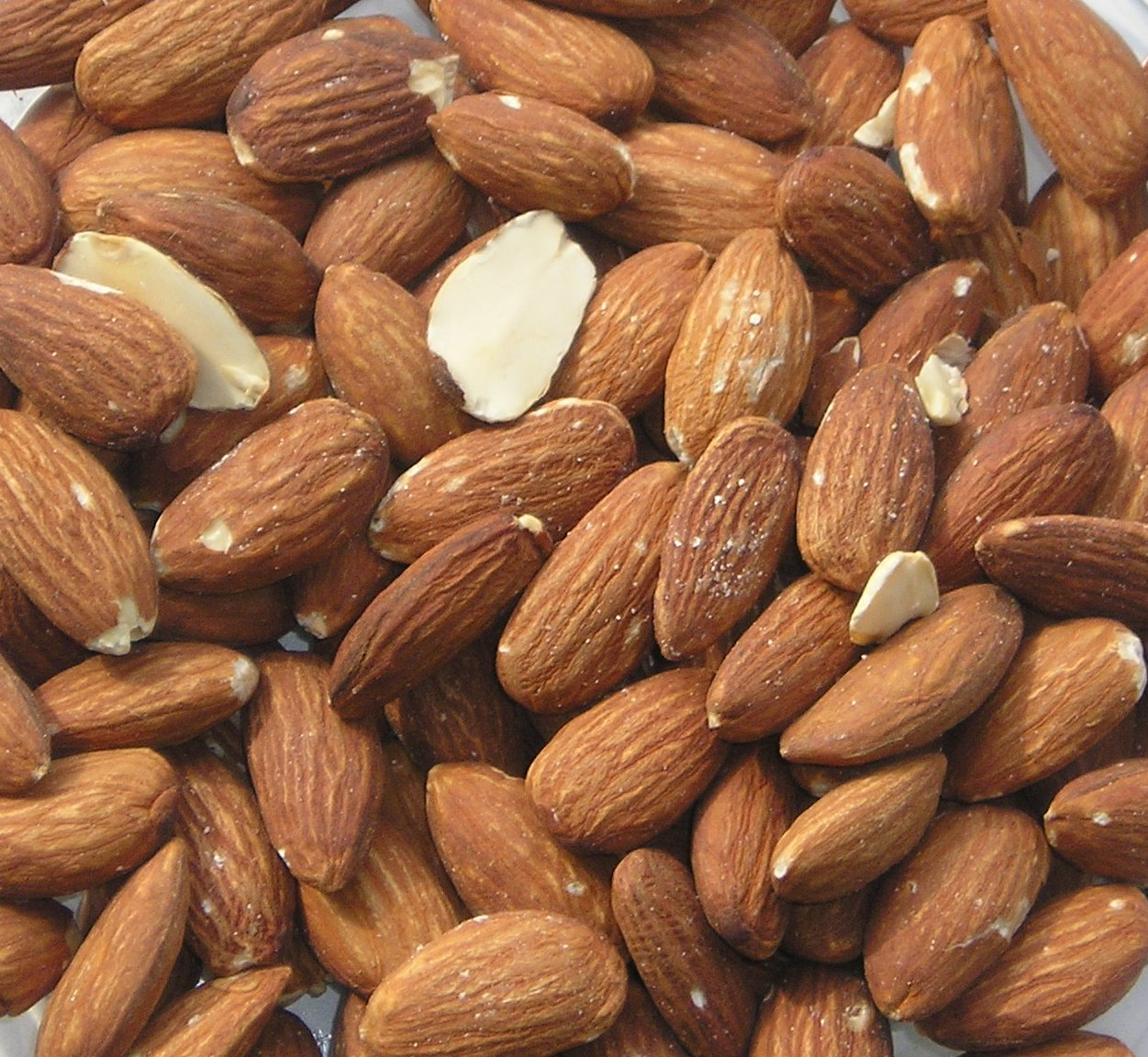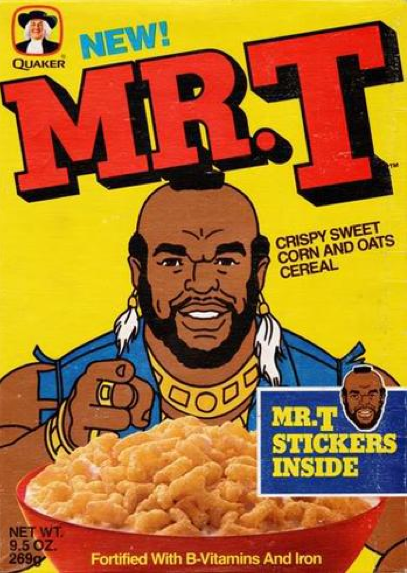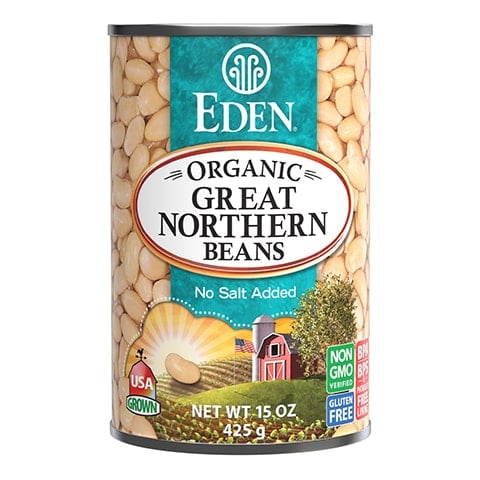Well, the artichokes were a success. We concluded that it does indeed take some time and effort to cook up the 'chokes, but they sure taste worlds better than the stuff you get in a jar. Plus it's cheaper and in no way processed!
Today I want to touch briefly on the wonderful Vitamin E. E is one of the fat-soluble vitamins, meaning it is stored in our fat cells in excess and can be used at a later time (water-soluble vitamins, like the Bs and C for example, go right through us). Vitamin E can be found in plant oils such as canola, olive, and safflower. Nuts and seeds are also high in vitamin E. You can find a little bit in legumes, oats and barley as well.
E plays a huge role in preventing oxidation in unsaturated fats in your tissues. That is to say, your cell membranes, which are primarily composed of unsaturated fats, would be in big trouble without Vitamin E. Since every single type of cell in your body (skin cell, heart cell, muscle cell, brain cell, nerve cell...) has a membrane, we need Vitamin E to fight off radical oxygens floating around trying to damage your cells.
So go home and eat some hummus with olive oil drizzled on top, a peanut butter sandwich, or snack on some sunflower seeds! Your cells will thank you!
Thursday, April 28, 2011
Thursday, April 21, 2011
Artichokes
So, yesterday, my cooking class suggested to me that we work with artichokes next week. They told me that they are intimidated by artichokes (the real deal, not the "hearts-in-a-jar" stuff), and I realized that I myself have not dabbled much in the world of artichoke cooking. I know you can steam them and dip the leaves in butter and scrape off the meaty flesh (drool...), but that's my extent of artichoke knowledge.
Here's what I think I'll try next week. It will be a learning experience for all of us:
Garlic Sauteed Artichokes
Ingredients:
2 large fresh artichokes
3 cloves garlic, minced
2 tbsp butta
Directions:
Artichokes offer lots of potassium, folate, vitamin C, and fiber (and virtually no calories - 25 calories per 1 whole artichoke!). Also, a little bird told me that artichokes can cure hangovers, but I can't say for sure.
Here's what I think I'll try next week. It will be a learning experience for all of us:
Garlic Sauteed Artichokes
Ingredients:
2 large fresh artichokes
3 cloves garlic, minced
2 tbsp butta
Directions:
- Rinse artichokes under cold water, and use a sharp knife to cut the top 1/3 off of each one. Trim the stems to about 1 inch, and remove the smaller leaves from around the base. Use scissors to remove any remaining leaf tips. Cut each artichoke in half from the bottom to the top, then use a spoon to scrape out the hairy choke. Rinse again to remove any residual hairs.
- Melt the butter in a large skillet over medium heat. Add the garlic, and saute for about 1 minute to flavor the butter. Arrange artichoke halves cut-side down in the skillet. Saute for about 5 or 10 minutes, or until lightly browned. Reduce heat to low, and pour in about 1/4 cup of water, cover, and let steam for 15 to 20 minutes, or until the artichokes are tender. A fork should easily pierce the stem.
Artichokes offer lots of potassium, folate, vitamin C, and fiber (and virtually no calories - 25 calories per 1 whole artichoke!). Also, a little bird told me that artichokes can cure hangovers, but I can't say for sure.
Monday, April 18, 2011
Kale and Cucumber Salad
I can't fully express my excitement for the approaching growing season (all this snow business is making the itch even worse), so I've been racking my brain for Farmer's Market recipe ideas. Here's a great one I'd like to post, and thank Kelcie Douglas for.
Kale and Cuke Salad
Ingredients:
1-2 bunches of kale, coarsely chopped
1-2 cucumbers, finely diced
1-2 tomatoes, diced
1/2 red onion, chopped
Raw tahini dressing: 3 tbsp tahini, 3 tbsp red wine vinegar, 1/8 tsp cumin 1/8 tsp coriander, 1 clove garlic minced, 2 tbsp soy sauce, 1 tbsp lemon juice, honey to sweeten, water to dilute
Directions: Combine veggies in a large bowl. Combine dressing ingredients in a small bowl. Mix together and enjoy.
Easy as pie!
Kale is a delicious crunchy superfood high in vitamins K, A, and C. These vitamins protect immune function, help proper blood clotting, and protect vision and bone growth. Kale is known to be protective against breast, colon, bladder, ovary, and prostate cancer, and aids in the body's detoxification process. Kale is also great for treating constipation.
If you've not tried kale before, give it a try!
Kale and Cuke Salad
Ingredients:
1-2 bunches of kale, coarsely chopped
1-2 cucumbers, finely diced
1-2 tomatoes, diced
1/2 red onion, chopped
Raw tahini dressing: 3 tbsp tahini, 3 tbsp red wine vinegar, 1/8 tsp cumin 1/8 tsp coriander, 1 clove garlic minced, 2 tbsp soy sauce, 1 tbsp lemon juice, honey to sweeten, water to dilute
Directions: Combine veggies in a large bowl. Combine dressing ingredients in a small bowl. Mix together and enjoy.
Easy as pie!
Kale is a delicious crunchy superfood high in vitamins K, A, and C. These vitamins protect immune function, help proper blood clotting, and protect vision and bone growth. Kale is known to be protective against breast, colon, bladder, ovary, and prostate cancer, and aids in the body's detoxification process. Kale is also great for treating constipation.
If you've not tried kale before, give it a try!
Thursday, April 14, 2011
Beans, Beans, the Magical Fruit
Yesterday in the cooking workshop we prepared two dishes: Roasted Lemon Garlic Broccoli and Sweet Corn and Black Bean Salad. Nom nom nom!!
Roasted Lemon Garlic Broccoli
Ingredients:
Roasted Lemon Garlic Broccoli
Ingredients:
2 large heads broccoli 3 cloves garlic, minced
Soy sauce to taste 1 lemon, halved
Directions:
Preheat oven to 400 F. Cut the broccoli into florets and place in a greased casserole dish. Mix in garlic and drizzle with soy sauce. Squeeze half of the lemon over the broccoli. Place in oven for 20 minutes, stirring once halfway through. Remove dish from oven and squeeze the other half of the lemon over the broccoli. Let cool and serve.
Sweet Corn and Black Bean Salad
Ingredients:
2 cups corn kernels (frozen, canned or fresh) ½ cup red onion, finely chopped
2 tbsp red wine vinegar or rice vinegar 1 tbsp extra-virgin olive oil
1 tbsp lime juice ¼ tsp salt
½ tsp black pepper 4 cups black beans (rinsed and drained)
1 bell pepper, finely chopped 1/3 cup fresh cilantro leaf, finely chopped
Directions:
1. Bring medium pot of water to a boil.
2. Add corn and cook for 1 minute, then drain well. Rinse in cold water and drain again. (If using fresh or canned corn instead of frozen, skip these steps.)
3. In a large bowl, whisk together vinegar, olive oil, lime juice, salt and pepper to create a dressing.
4. Add corn, onion, beans, and bell pepper to the bowl. Mix well with dressing.
5. If serving immediately, mix in cilantro. If not, chill in refrigerator for 2 hours and mix in cilantro just prior to serving. Serves 6.
Black beans offer a plethora of vitamins and minerals to keep the body functioning properly. They also are chock full of fiber and help with digestion. Corn also provides fiber as well as vitamin B1, folate, and vitamin C. This dish is low in salt and calories but high in nutrients to keep you at a healthy weight and with a healthy immune system!
Friday, April 8, 2011
Roasted Chicken with Spring Vegetables
I've recently started a cooking class, and wanted to post the recipe we made together this week. I'll also be demonstrating this recipe at a workshop tomorrow morning in Lansing.
The dill is key in this dish. I love the distinct flavor of dill, it really seasons up chicken or seafood without adding salt. Dill is great to mix in with sour cream or cream cheese, and it also goes well tossed into potato salad, pasta salad, tuna salad, scrambled eggs or quiches.
Roasted Chicken with Spring Vegetables
Ingredients:
Boneless chicken breast, skin on or off
1 lemon, halved
Fingerling or other small potatoes
1 bunch scallions
1 bunch radishes
Handful of baby carrots
1/8 cup chopped fresh dill
2 tbsp olive oil
salt and pepper to taste
Directions:
1. Preheat oven to 450 degrees. Rinse the chicken and pat dry. Season with salt and pepper, then place skin-side up (if it has skin) on a baking sheet. Squeeze 1/2 of the lemon over the chicken and drizzle with 1 tbsp olive oil. Roast for 15 minutes.
2. Meanwhile, cut the potatoes and radishes in half and cut the scallions into 3rds. Toss the potatoes, radishes, carrots and remaining 1 tbsp olive oil in a bowl; season with salt and pepper.
3. Remove the chicken from the oven and scatter the vegetables around it. Continue to roast until the vegetables are tender and the chicken is golden and cooked through, about 20 more minutes. Squeeze the remaining 1/2 of the lemon over the chicken and vegetables. Stir in dill.
The dill is key in this dish. I love the distinct flavor of dill, it really seasons up chicken or seafood without adding salt. Dill is great to mix in with sour cream or cream cheese, and it also goes well tossed into potato salad, pasta salad, tuna salad, scrambled eggs or quiches.
Roasted Chicken with Spring Vegetables
Ingredients:
Boneless chicken breast, skin on or off
1 lemon, halved
Fingerling or other small potatoes
1 bunch scallions
1 bunch radishes
Handful of baby carrots
1/8 cup chopped fresh dill
2 tbsp olive oil
salt and pepper to taste
Directions:
1. Preheat oven to 450 degrees. Rinse the chicken and pat dry. Season with salt and pepper, then place skin-side up (if it has skin) on a baking sheet. Squeeze 1/2 of the lemon over the chicken and drizzle with 1 tbsp olive oil. Roast for 15 minutes.
2. Meanwhile, cut the potatoes and radishes in half and cut the scallions into 3rds. Toss the potatoes, radishes, carrots and remaining 1 tbsp olive oil in a bowl; season with salt and pepper.
3. Remove the chicken from the oven and scatter the vegetables around it. Continue to roast until the vegetables are tender and the chicken is golden and cooked through, about 20 more minutes. Squeeze the remaining 1/2 of the lemon over the chicken and vegetables. Stir in dill.
Thursday, April 7, 2011
Folic Acid!
Folic acid, otherwise known as vitamin B9, or folate (or if you're feeling zealous, Pteroylglutamic acid), is an essential nutrient for us humans. We need it for the proper formation of DNA as well as for the formation of heme. Heme is the part of our red blood cells that carries the iron, and therefore makes the cells red. If we don't have a sufficient amount of folic acid (and thus heme), it can impair the maturation of red blood cells, resulting in anemia.
Folic acid is also vital for neural tube development during pregnancy. The neural tube forms the brain and the spinal cord of the fetus. A deficient intake of this vitamin by the mother can result in a premature birth and/or neural tube defects in the baby.
Unfortunately, folic acid is one of the most common vitamins in which to be deficient. Perhaps the easiest way to get your RDA of the stuff is from a fortified cereal. Other great sources include liver, cowpeas, spinach, asparagus, great northern beans, green peas, broccoli, avocado, orange juice, and peanuts.
So, incase you were feeling extra cold this winter (or are still feeling extra cold!), this could be due to what you're eating. Maybe you're not getting enough iron or maybe you're lacking in the folic acid department. You may also be lacking sufficient vitamin B12, as all three of these nutrients are absolutely essential for healthy red blood cells, but we'll save B12 for another post. :)
Folic acid is also vital for neural tube development during pregnancy. The neural tube forms the brain and the spinal cord of the fetus. A deficient intake of this vitamin by the mother can result in a premature birth and/or neural tube defects in the baby.
Unfortunately, folic acid is one of the most common vitamins in which to be deficient. Perhaps the easiest way to get your RDA of the stuff is from a fortified cereal. Other great sources include liver, cowpeas, spinach, asparagus, great northern beans, green peas, broccoli, avocado, orange juice, and peanuts.
So, incase you were feeling extra cold this winter (or are still feeling extra cold!), this could be due to what you're eating. Maybe you're not getting enough iron or maybe you're lacking in the folic acid department. You may also be lacking sufficient vitamin B12, as all three of these nutrients are absolutely essential for healthy red blood cells, but we'll save B12 for another post. :)
Subscribe to:
Posts (Atom)










